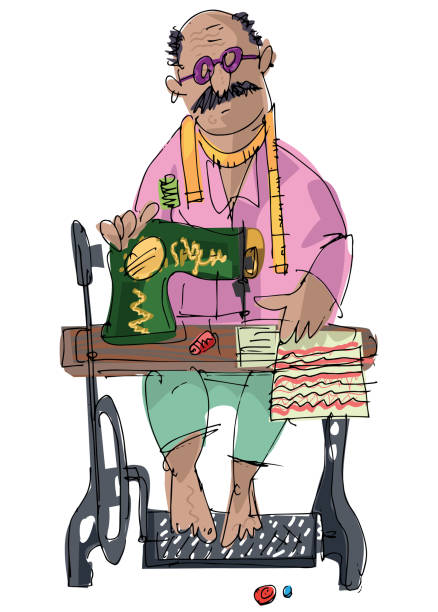Tailor Perth Specialists: Tailor-Made Solutions for Elegant Outfit
Tailor Perth Specialists: Tailor-Made Solutions for Elegant Outfit
Blog Article
Understanding the Tailoring Refine: From Textile Option to Last Suitable for the Suitable Closet
The customizing procedure is a complicated interplay of art and science, beginning with the essential decision of fabric option and finishing in the exact changes of last fittings. Each textile kind brings unique high qualities that affect not just the aesthetic allure but also the garment's long life and viability for various events. Comprehending the nuances of customizing strategies can raise one's closet to unprecedented levels of elegance. As we explore these components additionally, one need to think about how also the tiniest details can dramatically impact the general outcome of one's individual style.
Importance of Material Option
Picking the best material is crucial in the tailoring procedure, as it straight affects the comfort, durability, and general aesthetic of the last garment (tailor perth). The choice of fabric sets the foundation for the garment's performance, performance, and style. Different materials possess special homes, such as stretch, breathability, and weight, which can dramatically influence how the garment drapes and fits the body
Moreover, fabric selection influences the garment's long life and convenience of treatment. High-grade textiles can hold up against damage, keeping their look and structure in time, while lower-quality materials might bring about pilling or fading. Additionally, the appropriate material adds to the garment's ability to transition across events and seasons, thereby boosting convenience.
A customized piece made from an appropriate material not only showcases craftsmanship yet additionally raises the wearer's self-confidence. Subsequently, recognizing the nuances of fabric option is vital for any kind of customizing venture. It makes certain that the end product not only meets the visual desires of the customer however likewise aligns with useful demands, thereby accomplishing a harmonious balance between type and function in the customized closet.
Types of Fabrics and Their Usages
Recognizing the numerous kinds of materials offered is vital for making notified decisions during the tailoring process. Each material has unique characteristics that determine its viability for particular garments and celebrations.
Its flexibility enables it to be customized right into every little thing from shirts to gowns. Its all-natural flexibility aids garments keep form over time.
Silk exudes high-end and is light-weight, making it excellent for eveningwear and fragile shirts; nonetheless, it calls for careful handling due to its frailty. Linen, with its textured finish, is a preferred choice for warm climates, providing a airy and crisp feel, however it wrinkles quickly, which might impact the garment's look.
Synthetic materials, such as polyester and nylon, deal longevity and resistance to creases, making them ideal for day-to-day wear and active apparel. Recognizing these textile kinds and their residential or commercial properties allows for much better decision-making, making certain that each customized item not only fits well but also aligns with the intended objective and celebration.
The Tailoring Methods Discussed
The art of tailoring counts on a selection of strategies that transform fabric right into well-fitted garments. Central to this procedure is pattern drafting, where a tailor creates layouts based upon the client's measurements and preferred style. This initial action makes sure that the garment will fit the user correctly prior to any type of cutting occurs.
Once patterns are developed, reducing strategies come into play. Accuracy is paramount as inaccuracies can lead to misfitting garments. Tailors typically make use of different reducing techniques, such as single-layer cutting for intricate layouts and multiple-layer cutting for performance on basic patterns.
Basting is another crucial technique, permitting tailors to momentarily stitch textile pieces with each other for a preliminary installation. This method supplies the chance to analyze the drape and general shape before last stitching.
Seaming methods, including french seams and flat-felled joints, improve the garment's durability and visual allure. Tailors also utilize techniques such as interfacing More about the author and extra padding to offer structure and form to details areas, like shoulders and collars.
Lastly, completing strategies, including hemming and edge ending up, guarantee the garment's long life while providing a polished look. With each other, these strategies form the foundation of effective tailoring, leading to exquisite, tailor-made apparel.
Fitting Modifications and Factors To Consider

Secret considerations consist of the shoulder fit, which needs to neither sag neither restrict activity, and the sleeve size, which ought to allow for comfy arm motion while maintaining a sleek appearance. Furthermore, adjustments at the midsection can fine-tune the shape, with choices to let out or absorb fabric as needed.
The increase of trousers is an additional important element; it should rest easily above the hips without creating discomfort, enabling convenience of motion. Hemming sizes for both pants and skirts need to show the wearer's favored style while appreciating percentages.

Preserving Your Tailored Apparel
Proper maintenance of tailored garments is vital to maintaining their fit and appearance gradually. To ensure durability, regular cleansing is vital. Always comply with the care tag instructions, which may advise completely dry cleaning for delicate fabrics or machine cleaning for more long lasting products. Stay clear of constant laundering, as this can use down the textile and modify the garment's shape.
Storage is similarly important; use cushioned wall mounts for coats and layers to preserve shoulder company website framework, and shop trousers folded nicely or hung to protect against creasing. Safeguard garments from straight sunlight, which can fade shades and damage fibers.
Additionally, routine evaluations for small repairs can prevent bigger issues. Inspect for loose switches, tearing joints, or indications of moth damage, dealing with these issues immediately to maintain the garment's integrity.
Last but not least, take into consideration seasonal rotation. Wearing tailored items in small amounts enables textiles to recover, expanding their life-span. By applying these maintenance methods, you can make sure that your tailored garments remain as pristine as the day you initially wore them, improving your suitable closet for several years ahead.
Verdict
The tailoring procedure, incorporating material choice, knowledgeable techniques, and accurate fitting adjustments, plays an essential function in creating garments that enhance both convenience and style. Each phase adds to the overall efficiency of the last product, making sure that clothes not only fits well but additionally shows individual identity. In addition, comprehending the importance of maintenance extends the life of customized garments, solidifying their value in a well-curated wardrobe. An extensive technique to customizing finishes in a refined and certain appearance.
Choosing the ideal material is critical in the customizing procedure, as it straight influences the convenience, resilience, and overall visual of the last garment. The selection of fabric sets the foundation for the garment's functionality, design, and efficiency. Different materials possess distinct properties, such as weight, breathability, and stretch, which can considerably impact exactly how the garment drapes and fits the body.
The art of tailoring relies on a variety of strategies that transform textile into well-fitted recommended you read garments.The tailoring process, encompassing textile choice, skilled strategies, and precise suitable changes, plays a vital duty in creating garments that improve both comfort and style.
Report this page